Reviews
See Your Fate With These Illicit Medieval Playing Cards at the Cloisters
The secret decks were banned by the clergy.
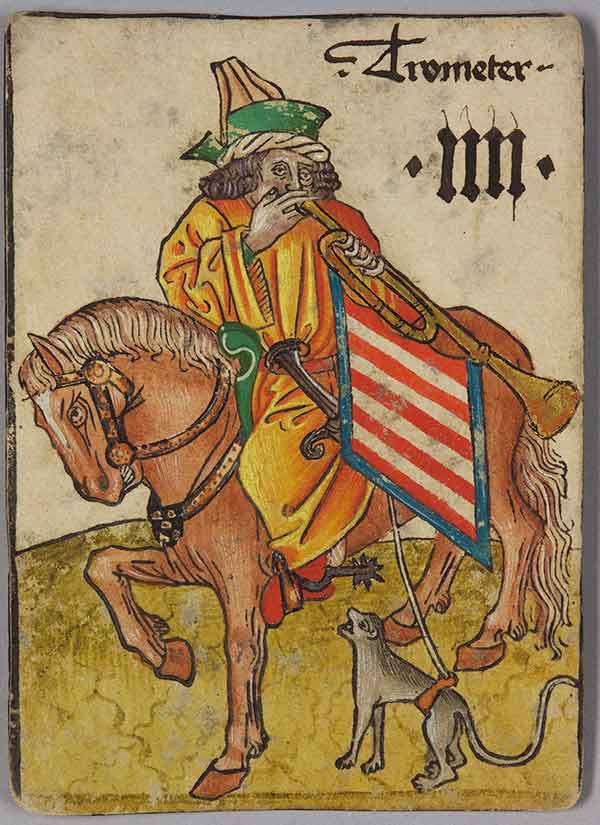
Image: © Kunsthistorisches Museum, Vienna.
The secret decks were banned by the clergy.

Lauren Palmer

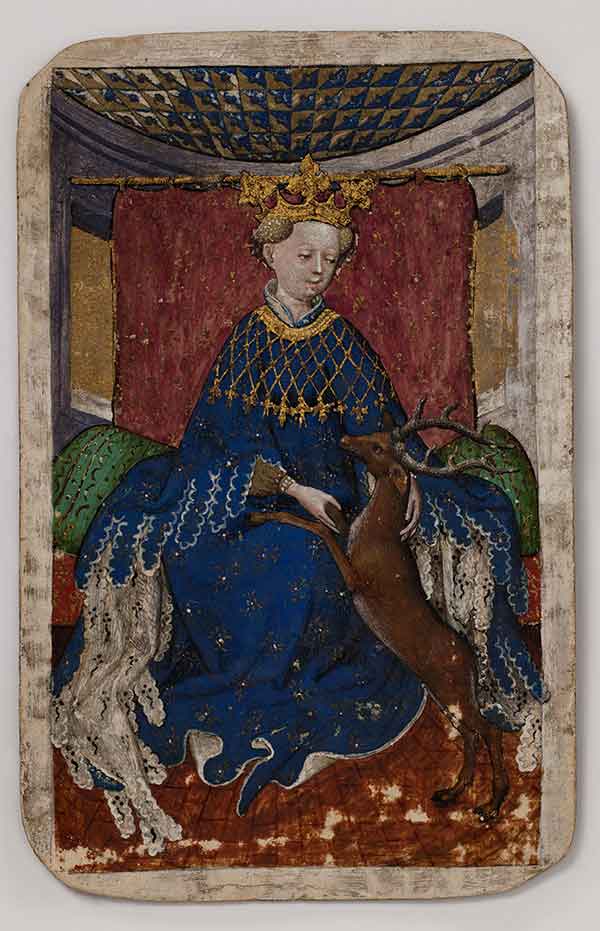
There is a certain universality associated with card games, which is evident in the latest exhibition at the Cloisters in New York, titled “The World of Play: Luxury Cards 1430-1540.”
“The random conditions presented by a hand of cards are a metaphor for the circumstances one is born into,” writes curator Timothy B. Husband, “though a game has a distinct advantage: if you don’t like the hand you were dealt, you can draw another.”
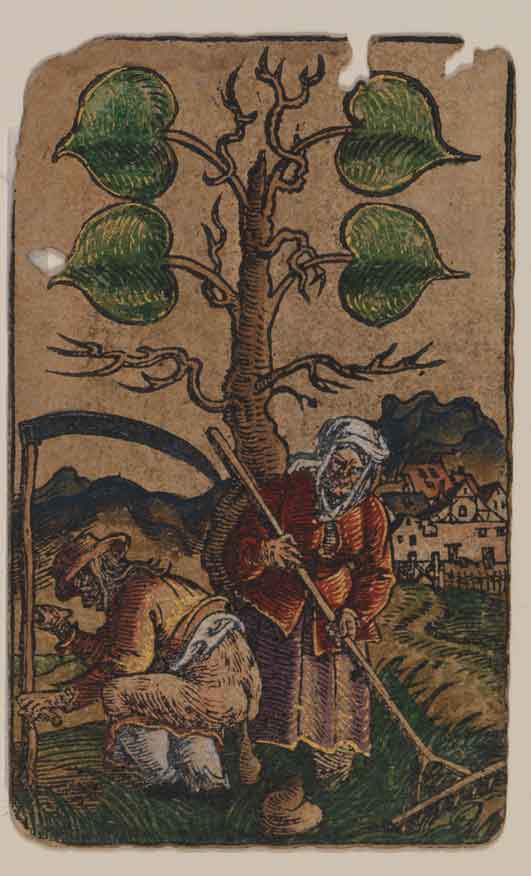
4 of Leafs, from The Playing Cards of Peter Flötner Peter Flötner (German, Thurgau 1485–1546 Nuremberg) Published by Hans Christoph Zell, German, Nuremberg, ca. 1540.
Image: © Germanisches Nationalmuseum, Nuremberg, photo: Monika Runge.
Playing cards have their origins in Asia and were likely introduced to Europe through trade in the late 14th century. As the cards usually involved gambling, they were deemed illicit by officials and the clergy, but secret decks abounded. The invention of the printing press a century later allowed for reproduction and distribution of images on a scale that hadn’t been possible before.
However, the exquisite, hand-painted cards on view at the Cloisters are likely to have been commissioned by nobility and kept from wide circulation. It is clear from the painstaking details that the cards that compose “The World of Play” were not intended for use, based on their superb condition.
While artisans took cues from historical events and existing social structures, the images are fanciful displays of vivid imaginations. The scenes depicted on the cards are largely pastoral, tied to leisure pursuits of medieval nobility. A French lady in waiting is depicted with a stringed instrument in one card, while in another a Hungarian trumpeter on a horse blows his horn near a leashed creature below.
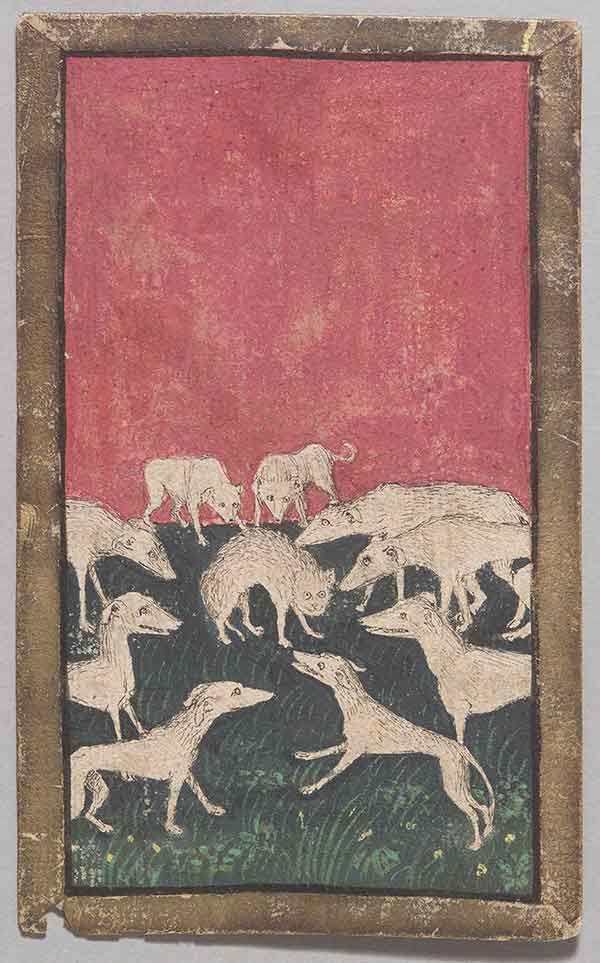
9 of Hounds, from The Courtly Hunt Cards (Das Hofjagdspiel) Workshop of Konrad Witz (active in Basel, 1434–44), German, Upper Rhineland, ca. 1440–45.
Image: © Kunsthistorisches Museum, Vienna.
Kept under glass in three rhomboidal display cases in the Cloisters, the earliest surviving European playing cards are grouped together based on their area of origin. The hand-painted faces of the Germanic Stuttgart Cards, the Ambras Courtly Hunt Cards, and The Cloisters Playing Cards are joined by several examples of early intaglio prints and Italian tarot cards from the Visconti and Visconti-Sforza decks.
The images show the court and commoners enacting roles as a means of identifying them and their importance. Capturing these idealized moments, the cards remind contemporary viewers that even small works can illuminate big changes in society.
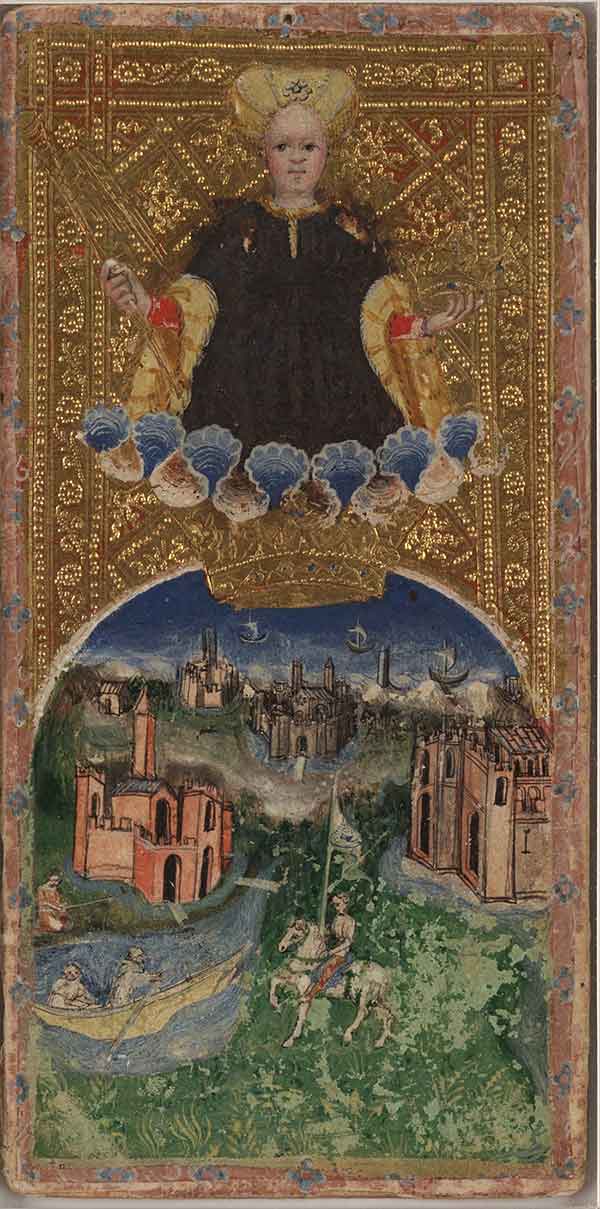
World, from The Visconti Tarot Workshop of Bonifacio Bembo, ca. 1450.
Image: © Beinecke Rare Book and Manuscript Library, Yale University, New Haven.
See more images of these richly-illustrated treasures below.

Knave of Cups, from The Visconti Tarot Workshop of Bonifacio Bembo, ca. 1450.
Image: © Beinecke Rare Book and Manuscript Library, Yale University, New Haven.
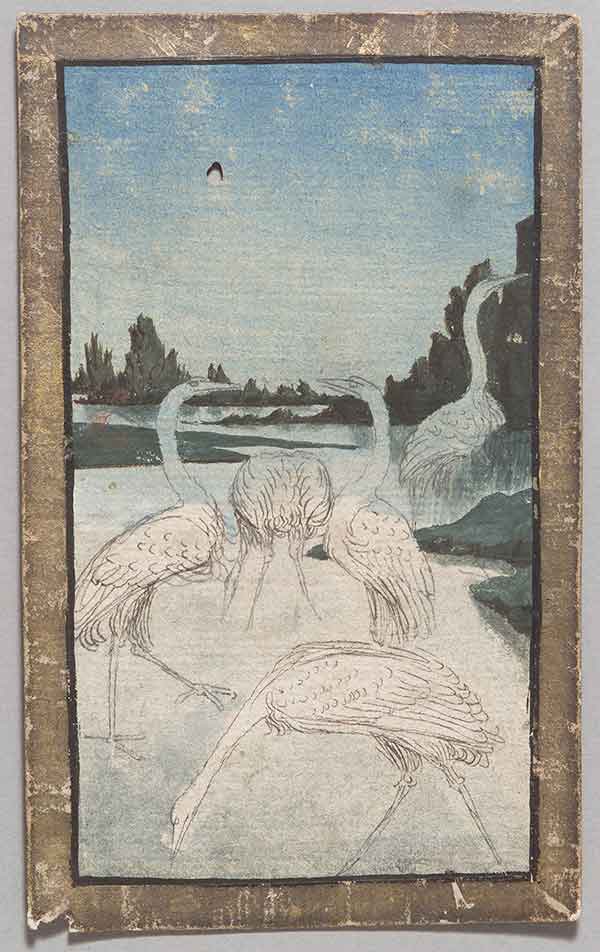
5 of Herons, from The Courtly Hunt Cards (Das Hofjagdspiel) Workshop of Konrad Witz, ca. 1440–45.
Image: © Kunsthistorisches Museum, Vienna.

4 (Trumpeter) of Hungary, from The Courtly Household Cards (Das Hofämterspiel), ca. 1450.
Image: © Kunsthistorisches Museum, Vienna.
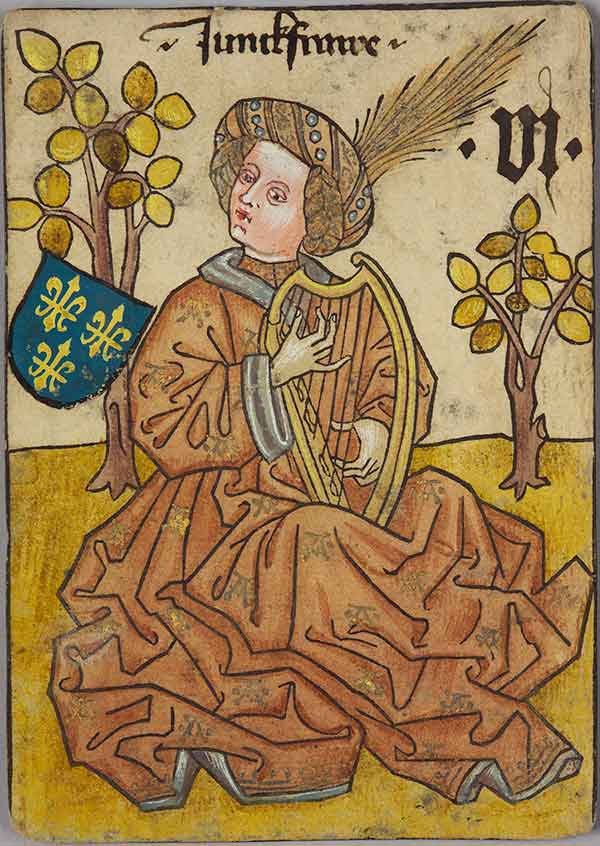
6 (Lady-in-Waiting) of France, from The Courtly Household Cards (Das Hofämterspiel), ca. 1450.
Image: © Kunsthistorisches Museum, Vienna.
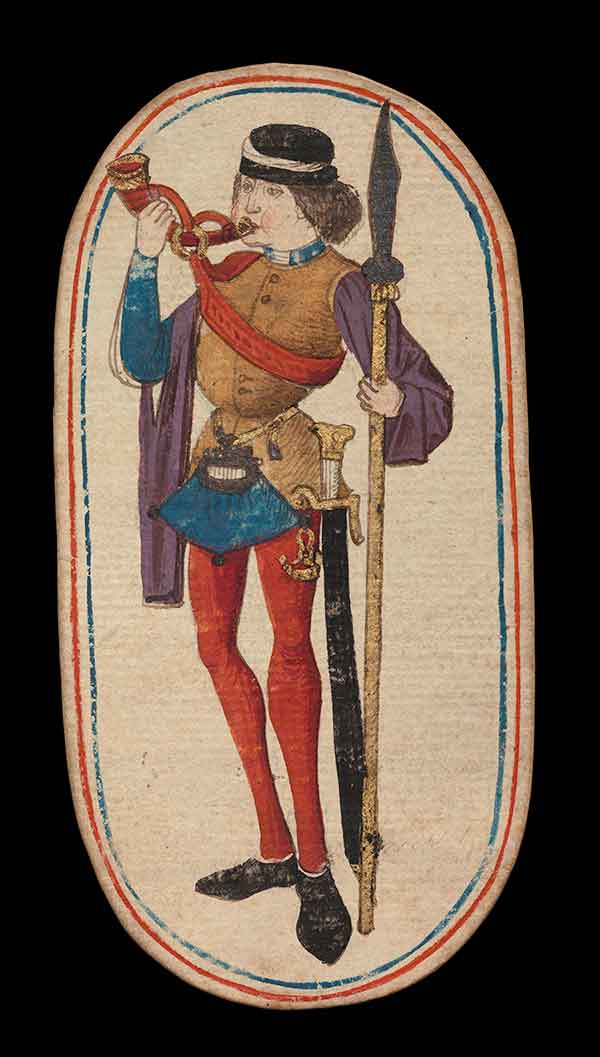
Knave of Horns, from The Cloisters Playing Cards South Netherlandish, Burgundian territories, ca. 1475–80.
Image: © The Metropolitan Museum of Art, New York.
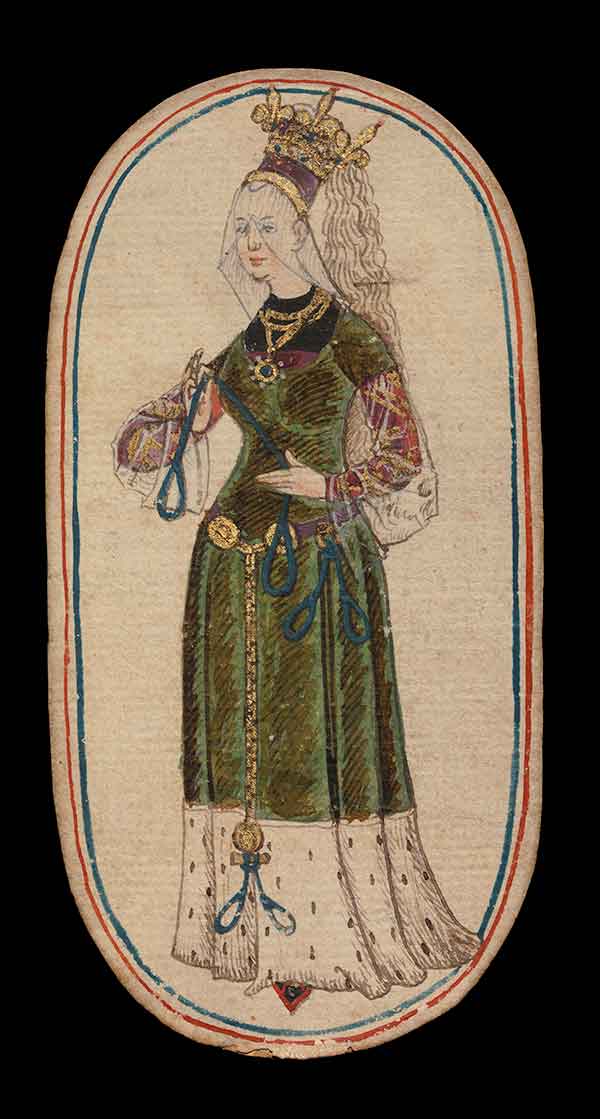
Queen of Nooses, from The Cloisters Playing Cards South Netherlandish, Burgundian territories, ca. 1475–80.
Image: © The Metropolitan Museum of Art, New York.
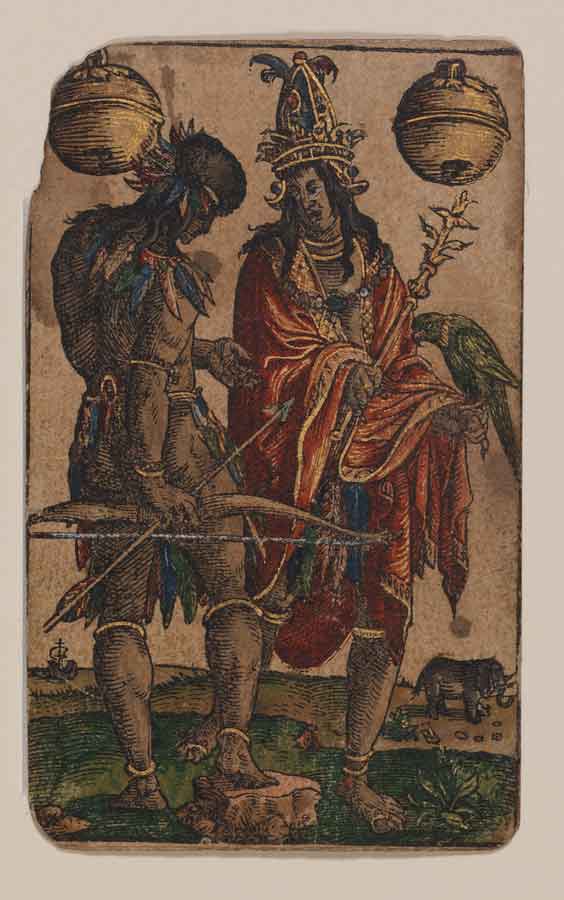
King of Bells, from The Playing Cards of Peter Flötner. Published by Hans Christoph Zell, ca. 1540.
Image: © Germanisches Nationalmuseum, Nuremberg, photo: Monika Runge.
“The World in Play: Luxury Cards, 1430-1540” is on view from January 20-April 17, 2016 at the Cloisters in New York.